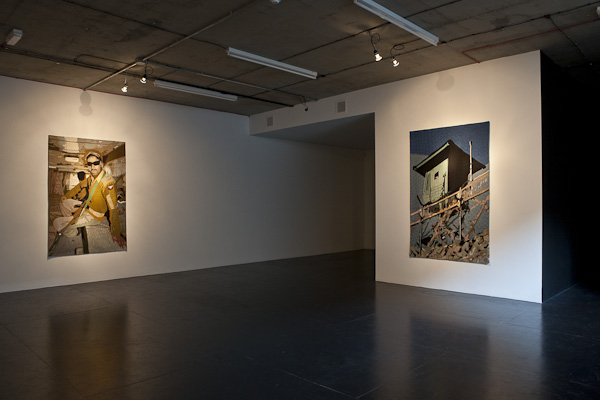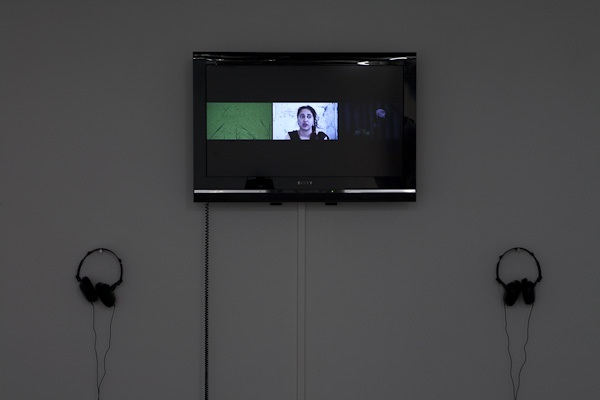| |
FERNANDO ARIAS - EXHIBITION SRINAGAR, KASHMIR AT EAST CENTRAL GALLERY - LONDON
22 JAN- 26 FEV
http://www.eastcentralgalleries.com/
East central is pleased to present srinagar, kashmir, a solo exhibition by the colombian interdisciplinary artist fernando arias. This will be his first at the gallery.
Arias spent most of 2010 travelling in asia. the pieces in this exhibition were made in response to the situation he encountered in kashmir’s largest city, srinagar, where he spent a month. Arias was immediately confronted with a paradox: the beauty of the himalayan surroundings set against the violence and oppression of its people. The artist’s previous work has focused attention on the violence in colombia, and the situation he encountered in kashmir led him to create this show.
'Srinagar, kashmir' combines photography, video and traditional hand-woven textiles, documenting the daily life in srinagar, focusing on the almost-banal details of this existence. These are the details that are missed by the international media. arias speaks with weight, sensitivity and volume, in his bid to reveal the present situation on an intensely human level.
Through a series of chance encounters he was offered a room in ahmed's house on the edge of dal lake. The family of eight welcomed him into their home and helped orientate him in the city: “Each morning and evening i learned about their lives of curfews and fear, as father and sons took turns to visit me to talk for hours.” (fernando arias)
One of ahmed’s sons, firdous, worked for a textile house and took arias to meet the men who make the traditional woven and embroidered cloths that kashmir is famous for. He went into the homes of these men, who spend their days on ancient looms weaving intricate patterns for shawls that can take more than a year to complete. He was struck by the timelessness in their workshops as the men sat at their looms or on the floor, working at their crafts with little to separate them from their ancestors.
But beyond the stillness of their ancient workshops tension and violence flared into serious confrontations between young men and the indian police: “the contrast hit me each time i left the workshops to walk home through the city's streets”.
Arias asked firdous to find craftsmen to reproduce some of these images as handmade rugs, using traditional kashmiri techniques to describe the situation. By combining traditional techniques with images of life on srinagar’s street he drew the two together. The stunning wall-mounted rugs first draw the attention of the viewers to their gorgeous colours and the excellence of the craftsmanship, only to then hit them with the harsh reality of the depicted imagery.
As the month rolled on the rain and himalayan melt-waters inundated the city as dal lake over-spilled its banks. The family became marooned inside their house. Water, rain and floods are part of everyday life in the region and it occurred to arias that water played a crucial role in this conflict. The himalayas feed rivers that run south through kashmir to india’s parched planes, an irreplaceable source.
Superficially beautiful, dal lake also combined conflict, human anguish and the suggestion of ecological catastrophe. A shoe, a polystyrene plate, a bottle and a flask floating in the rushes told their stories, reflected human impacts on nature and the possibility or not of survival.
”As i captured these images my grandmother died on the other side of the world and i channelled my grieving by filming the still lives of these polluted waters."
In water, a series of photographs (digital photographs on paper, 60 x 80cm, 2010), the artist pairs images of the water which flooded the city, adorned by thriving green vegetation and floating domestic rubbish, with images of clouds and aerial view of large rivers. In one image arias focuses on the immediate human condition, while in the twin image he zooms out and refers to nature-at-large and the ways the reckless treatment of areas such as kashmir are nearing us to an ecological meltdown.
As the art student mahum says in mahum (hd video, 13 mins) the video interview referring to the violence and devastation of lives affected by repeated curfews and decades of indian military control: '...this is going on but you are not supposed to pay attention to it'.
|
|



|